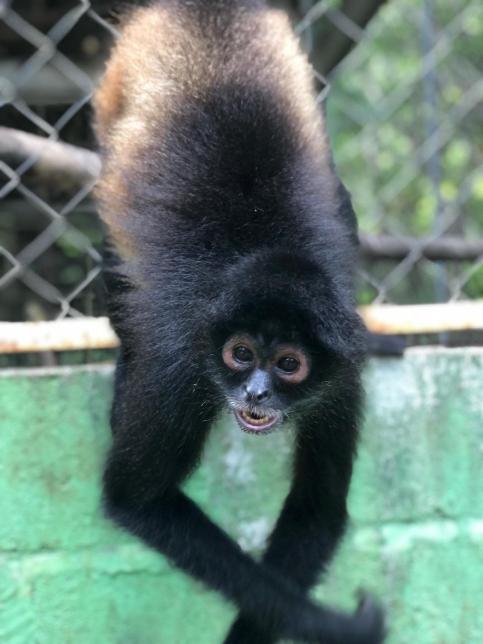Background & Aims

Comparative studies of taste perception are an important tool to better understand the evolution of the sense of taste. Primates are a particularly suitable order of mammals for the study of taste perception as they comprise a large variety of dietary specializations and the composition of food is commonly thought to affect the taste perception of a given species.
Black-handed spider monkeys (Ateles geoffroyi) are highly frugivorous New World primates specialized in consuming ripe fruit and their food selection behavior suggests that they may use the sweetness of fruits as a criterion for consumption.
Even though mammals display only one type of sweet-taste receptor (the TAS1R2+TAS1R3 heterodimer receptor), compounds of various chemical classes are perceived as sweet by humans. In addition to the carbohydrates sucrose, fructose, glucose, maltose, and lactose which are commonly found in the food of primates, other substances tasting sweet to humans range from simple amino acids over peptides and proteins to terpenoids, flavonoids, steroidal saponins, and dihydrochalcones.
A widely used approach to evaluate an animal's taste sensitivity at the behavioral level is to determine their taste preference thresholds, which corresponds to the lowest concentration of a given substance an animal prefers over water.
Thus, in order to gain further knowledge about the sweet-taste perception of nonhuman primates, the present study aimed at assessing the taste responsiveness of spider monkeys to a set of ten substances perceived as sweet by humans. Additionally, to better understand whether the spider monkeys, similar to human subjects, may perceive an unpleasant side taste with some of the artificial sweeteners, taste-induced facial responses were video-recorded and analyzed.
Responsible for this page:
Director of undergraduate studies Biology
Last updated:
05/25/20
